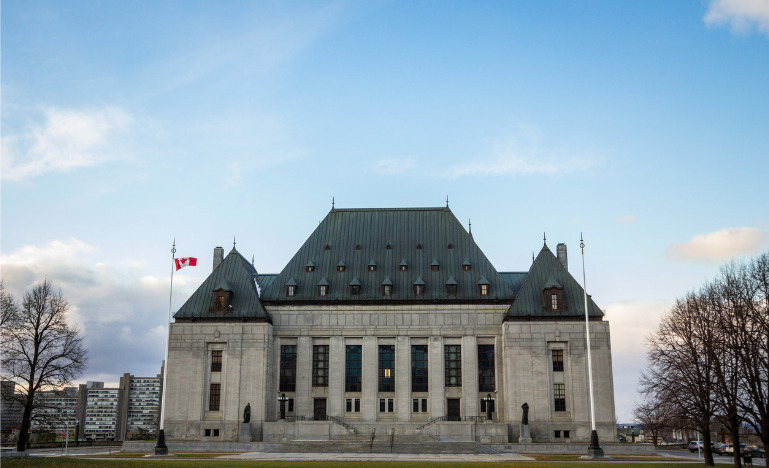Supreme Court blesses litigation funding
The top court lays out rules on funding to realize litigation assets.

The Supreme Court of Canada has released reasons for its January 23rd ruling from the bench that allowed a Quebec company in receivership to use a litigation funder to realize its only asset – a potential lawsuit worth as much as $200 million. The 7-0 decision is significant for the insolvency bar in particular because of the guidance it provides on the Companies’ Creditors Arrangement Act (CCAA).
In 9354-9186 Québec inc. v. Callidus Capital Corp., a casino gaming software company, formerly known as Bluberi, was attempting to sue its largest creditor, Callidus Capital Corporation, for “numerous and faulty actions and omissions” when they entered into a financing arrangement. While Bluberi was attempting to secure litigation financing, the supervising judge declared that Callidus should not be permitted to vote on a new plan of arrangement because it was acting with improper purpose.
While the Québec Court of Appeal overturned the lower court decision, the Supreme Court overturned that decision from the bench. In its written reasons, it stated that more deference should have been given to the supervising judge because he followed the case from the beginning and was balancing the interests.
“This extension of the improper purpose doctrine to the CCAA is novel, and that’s worthy of note,” says Sylvain Rigaud, partner with Norton Rose Fulbright Canada LLP in Montréal, and co-chair of the firm’s insolvency and restructuring team.
Rigaud intervened at the Supreme Court on behalf of Insolvency Institute of Canada and Canadian Association of Insolvency and Restructuring Professionals, which did not take a position on the outcome of the case. He says the decision is timely because the bar is expecting a wave of CCAA filings by businesses affected by the current global pandemic.
Rigaud notes that while the court did not comment on access to justice as part of their reasons, they nevertheless approved of litigation funding in describing it as a tool.
“That’s implicit – that follows access to justice,” says Rigaud. “Without the litigation funding agreement, there could have been no litigation moving forward. In an insolvency context where the only residual asset is a litigious claim, you can see that access to justice is synonymous with maximizing value and recovery for creditors.”
Jeremy Opolsky, a partner with Torys LLP in Toronto, says that this is the first time the Supreme Court has addressed litigation financing.
“While it doesn’t determine the issue conclusively and pushes off a lot of the nuances of funding into the future, it decides pretty conclusively that litigation funding isn’t illegal and particularly in these circumstances is quite clear that they have a role to play as interim financing in insolvency proceedings,” says Opolsky.
The decision confirms that litigation financing is another tool in debtors’ toolboxes to maximize the recovery from their assets, he adds. But whether it’s available in any given case will depend on the effect on the various stakeholders, including creditors and other affected parties.
“This case confirms that litigation funding is here to stay, but it’s going to take future cases and litigation to determine how it applies in different contexts, like class actions,” says Opolsky. “The court is quite careful here not to determine or weigh in on any particular issues of law as the funding would apply to the class action context.”
Paul Rand, Chief Investment Officer (Canada) with Omni Bridgeway (formerly Bentham IMF), says the timing of the decision is fortuitous.
“I suspect that given the economic environment we’re heading into, there will be interest in a decision from the Supreme Court that is really important to the insolvency practice,” says Rand. “We are pleased that litigation funding is a part of that conversation, because during this period, we think there is an opportunity for companies to do as Bluberi has done and obtained the opportunity to realize litigation assets by partnering with a funder.”
Rand says that this decision will allow for greater efficiency and answer questions that some may have had about the appropriateness of litigation funding, and is bound to draw more people’s attention to the availability of this kind of interim financing.
Rand says that because his company only funds meritorious actions, it is critical to ensuring that parties can access courts.
“Everyone knows how expensive litigation can be for a company, so to allow for the realization of a litigation asset is really important,” says Rand.
Opolsky also noted that the case is illustrative of the growing trend at the Supreme Court to decide cases orally from the bench with reasons to follow.
“You see a potential model developing here where the Court will give its decision from the bench, but nonetheless explain how the law is going to evolve, and you see the utility of that in these reasons,” says Opolsky, noting that the quick ruling from the bench allowed Bluberi’s lawsuit to proceed more quickly than waiting months for the reasons.


